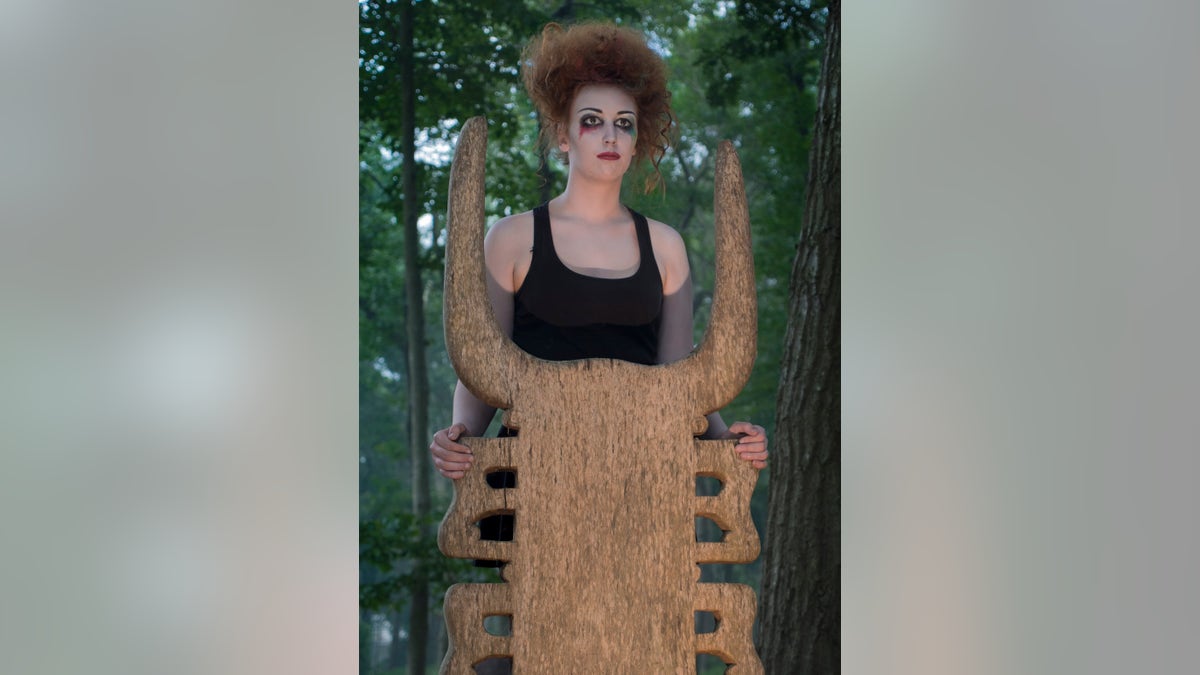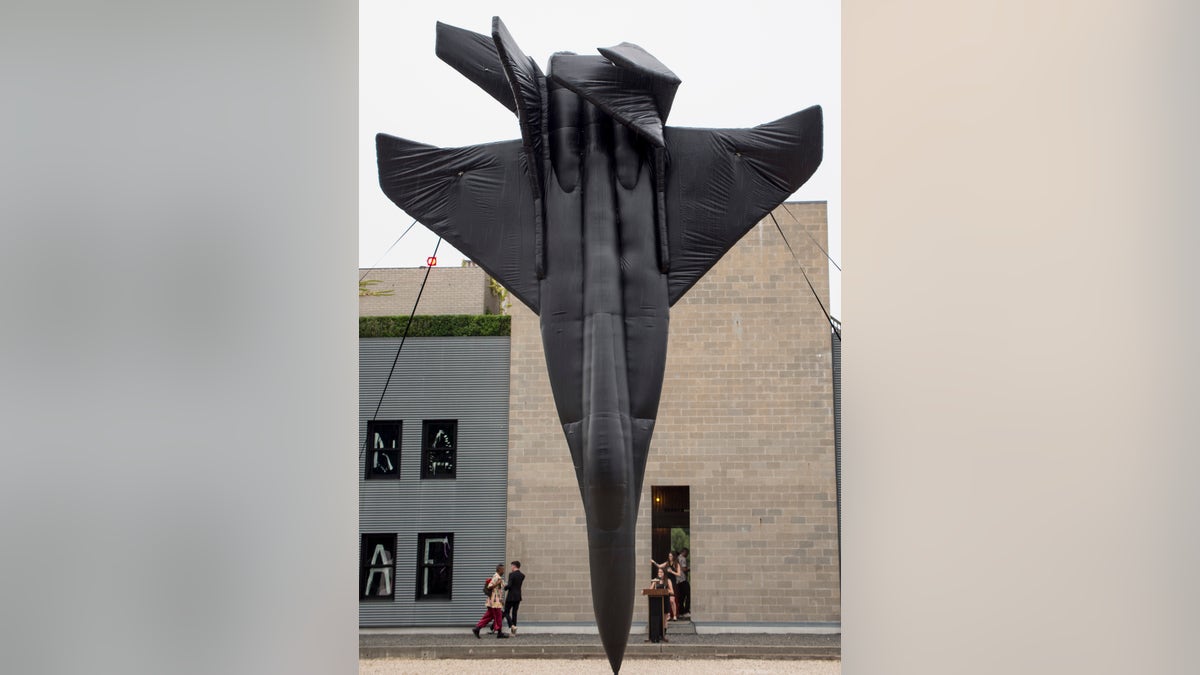
July 30, 2016: From the 23rd Annual Watermill Center Summer Benefit & Auction: BRIAN O’MAHONEY cats sleep anywhere ((c) Julian Mommert, Courtesy of The Watermill Center, 2016)
Editor's note: Founded by avant-garde visionary Robert Wilson in 1992, The Watermill Center is an interdisciplinary laboratory for the arts supporting young and emerging artists through its year-round Artist Residency Program, International Summer Program (which has gathered more than 80 artists from 30 countries this year), as well as Education Programs, and open rehearsals. The Center also presents exhibitions, public programing, and offers tours of its 20,000-square-foot building, eight-and-a-half acres of grounds and sculpture gardens throughout the year.
Anyone who has seen the work of American theatre director Robert Wilson will note that a very simple concept ties his myriad works together: awareness of time and space is paramount. The same concept holds true for The Watermill Center.
The Watermill Center, founded by Wilson on the East End of Long Island, has been around since

Photo by Judith Stockman (July 30, 2016: From the 23rd Annual Watermill Center Summer Benefit & Auction)
1991, but my experience with it began the summer of 2013. Arriving as a first year student artist, I was terrified. I didn’t know where I was, or what I was doing there. My three summers since were spent exploring and discovering the work of Robert Wilson, known colloquially and affectionately as

July 30, 2016: From the 23rd Annual Watermill Center Summer Benefit & Auction (Photo by Judith Stockman)
“Bob”, but were also about finding how The Watermill Center is a vehicle separate from its driver.

July 30, 2016: From the 23rd Annual Watermill Center Summer Benefit & Auction (Photo by Judith Stockman)
Activity around Watermill is centered around Bob’s attention to time and space. Living and working there for four weeks is a practice in being aware of yourself, and giving yourself over to the machinations of something larger than you.
Watermillians are constantly aware of time. The time we take planting in the gardens, talking to the other hundred summer artists, taking solace in the meditation that gardening provides, as well as the time we take preparing our food, slicing a mountain of green beans in half, lengthwise.

July 30, 2016: From the 23rd Annual Watermill Center Summer Benefit & Auction (Photo by Judith Stockman)
Time, and our awareness of it, is a vital element to life at The Watermill Center.
We worship and revere space. Anyone who has walked through our many gardens will attest that no garden is curated quite like The Watermill Center’s. Each individual flower is placed with care, taking into consideration the thousands of plants around it. The dining table is set with precision, and many a debate has occurred about which side of the plate the knife or fork goes. (I say fork on left, knife on right, but I could be wrong).

July 30, 2016: From the 23rd Annual Watermill Center Summer Benefit & Auction (Photo by Judith Stockman)
The aura of Watermill has had a profound effect on my work. Coming in as young, malleable artist, my initial awe and love for The Center led me to try to create work similar to Bob’s.
I went home and tried to make art that was meditative, beautiful, and sublime. But ask anyone who saw my production of Stravinsky’s “The Rite of Spring”, and they will tell you how poorly that approach worked for me.
In 2014, I returned to The Watermill Center for the second time, and treated it like a job. Each morning I punched in, and each night I clocked out. I wasn’t present in the time I was spending there, and wasn’t aware of what was happening in the space around me.
It was the famed Greek choreographer, Dimitris Papaioannou, who called me out on my absent-mindedness during a rehearsal for “The Garden”, a piece he was creating at Watermill. The work, a cirque de freak of dance and body, had me as the ringmaster, sharing with the audience the oddities at hand.
Dimitris told me I looked bored, and didn’t accept that as a “character choice” (aka : my lazy acting). He urged me to invite the audience into my world, and “show them the magic” and above all, to enjoy what I was doing.
When I returned in 2015, I was determined to show aforementioned magic. My performance piece for The Annual Summer Benefit, “Todo El Mundo Es Kitsch”, was inspired by the club-kid culture of the late 80’s and 90’s.
I wanted to make a work that was meaningless. Work that wasn’t meditative, but fun, not beautiful, but kitschy and interesting.
Finally, after three years of trying to be something I wasn’t, I found myself as an artist, thanks to The Watermill Center.
It is a naive man who thinks that one person’s way of living must be the only way of living, and I was a naive man (read: boy) in 2013.
I mistook the reverence for time and space for a religion, and only truly felt my work was of worth any value went I threw out this idea of worshipping of Bob Wilson’s two most important tools.
There is still a respect for time and space, but now I know I can manipulate them to my needs.
Bob Wilson is high art, I am kitsch. His work is austere, ethereal, and beautiful, mine is camp. But throughout the entire process, The Watermill Center has remained neutral.
The Watermill Center is neither high art nor kitsch, ethereal nor camp, it is a space where invited artists can devote their time to developing their practice.
It isn’t the Church of Bob Wilson, nor it a museum on his life and work, it is more than that. It is a place where artists from different countries and different practices can come to the space Bob has devoted so much time to, and manipulate it to make it their own.
It is a place I call home, a place where my performance work has strengthened by me being able to examine how my work relates to time and space, in my own kitschy, clowny, campy way.
